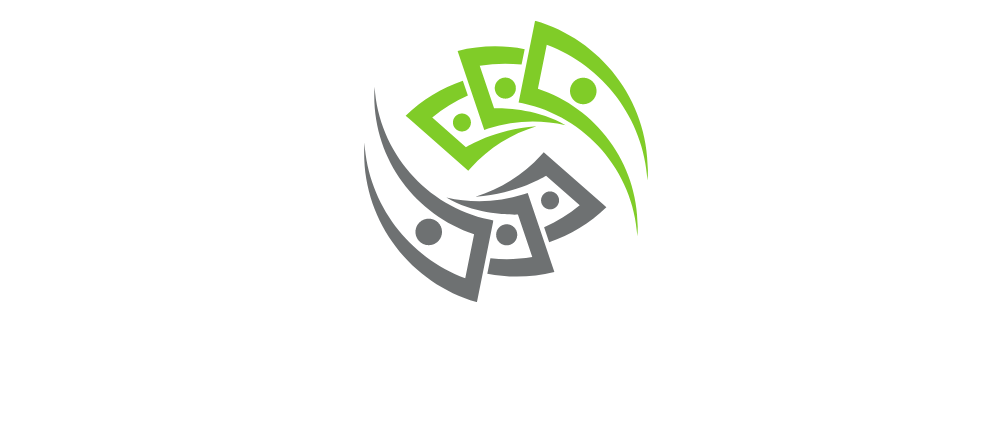Tokenized Treasuries: Crypto’s Stable Collateral Revolution

The world of cryptocurrency is constantly evolving and tokenized Treasuries are poised to revolutionize how digital assets interact with traditional financial instruments. As market volatility continues to challenge crypto investors these innovative financial products offer a promising solution for stable collateral and risk management.
Tokenized U.S. Treasury bonds represent a groundbreaking bridge between traditional finance and blockchain technology. By converting government securities into digital tokens investors can now access unprecedented levels of liquidity transparency and efficiency. This emerging asset class provides a unique opportunity to leverage the stability of government-backed securities within the dynamic crypto ecosystem.
The implications of tokenized Treasuries extend far beyond simple asset representation. They’re set to transform how crypto traders manage risk optimize returns and create more robust financial strategies in an increasingly interconnected global market. With major financial institutions and blockchain platforms exploring this technology the future of digital asset collateralization looks incredibly promising.
Key Takeaways
- 🌉 Tokenized Treasuries represent a groundbreaking bridge between traditional finance and blockchain technology, offering unprecedented liquidity and efficiency for crypto investors
- 💡 Blockchain enables the transformation of U.S. Treasury bonds into digital tokens, providing fractional ownership, enhanced transparency, and global trading capabilities
- 🔒 These digital assets offer robust risk mitigation strategies by leveraging stable government securities as collateral in volatile crypto markets
- 💰 Tokenized Treasuries democratize access to government securities, lowering investment thresholds and enabling smaller investors to participate in traditionally exclusive financial instruments
- 🚀 Major financial institutions are exploring tokenization technologies, signaling a significant shift towards more integrated and programmable financial ecosystems
- ⚖️ Regulatory frameworks are evolving to accommodate these innovative digital assets, promising a more flexible and transparent approach to securities trading
Understanding Tokenized Treasuries
Tokenized Treasuries represent a groundbreaking financial innovation that transforms traditional U.S. Treasury bonds into blockchain-based digital assets. These digital tokens bridge the gap between conventional financial instruments and the emerging cryptocurrency ecosystem.
What Are Tokenized Treasuries
Tokenized Treasuries are digital representations of U.S. Treasury bonds created on blockchain platforms. They convert traditional government securities into blockchain-based tokens that can be traded and transferred with increased efficiency and transparency. Key characteristics include:
- Digital representation of government bonds
- Fractional ownership capabilities
- Enhanced liquidity compared to traditional Treasury securities
- Programmable financial instruments
- Direct blockchain-based trading mechanisms
These tokens maintain the underlying value of U.S. Treasury bonds while introducing unprecedented accessibility and flexibility for investors. Financial institutions can leverage tokenized Treasuries as stable collateral in cryptocurrency markets.
How Blockchain Technology Enables Tokenization
Blockchain technology provides the critical infrastructure for tokenizing Treasury bonds through several core mechanisms:
- Smart Contract Integration
- Automate bond transfer processes
- Execute predefined financial rules
- Eliminate intermediary requirements
- Ensure transparent transaction records
- Decentralized Verification
- Cryptographic validation of token ownership
- Immutable transaction history
- Reduced counterparty risk
- Real-time settlement capabilities
- Fractional Ownership Mechanisms
- Allow smaller investment increments
- Democratize access to government securities
- Enable precise asset division
- Support global investor participation
Blockchain’s distributed ledger technology transforms traditional Treasury bonds into programmable digital assets that can be traded globally with unprecedented speed and efficiency.
The Current State of Crypto Collateral

The cryptocurrency market faces significant challenges in establishing robust and stable collateral mechanisms. Traditional crypto-based collateral models reveal critical vulnerabilities that demand innovative solutions to enhance financial stability and risk management.
Limitations of Traditional Crypto Collateral
Cryptocurrency collateral systems currently suffer from several fundamental constraints:
- High Volatility: Crypto assets exhibit extreme price fluctuations, making them unreliable as consistent collateral instruments. Bitcoin and Ethereum can experience 10-20% price swings within 24 hours.
- Limited Liquidity: Many crypto tokens lack sufficient market depth to support substantial lending or derivative transactions. Small-cap cryptocurrencies often struggle with minimal trading volumes.
- Regulatory Uncertainty: Decentralized collateral mechanisms operate in complex regulatory environments, creating legal and compliance risks for financial institutions.
- Security Vulnerabilities: Blockchain-based collateral systems remain susceptible to smart contract exploits and potential hacking attempts, undermining investor confidence.
Emerging Need for Stable Collateral Solutions
The cryptocurrency ecosystem increasingly demands alternative collateral mechanisms that address existing limitations:
- Risk Mitigation: Investors require stable assets that can maintain value during market turbulence.
- Institutional Adoption: Financial entities seek reliable collateral instruments compatible with traditional financial frameworks.
- Enhanced Transparency: Collateral solutions must provide clear valuation and tracking mechanisms.
- Programmable Assets: Modern collateral systems need flexible, digitally-native instruments that enable complex financial operations.
Tokenized Treasuries emerge as a promising solution to these systemic challenges, offering a bridge between traditional financial stability and blockchain innovation.
Benefits of Treasury Tokenization
Tokenized Treasuries revolutionize crypto market infrastructure by introducing sophisticated financial instruments with unprecedented advantages. These digital assets transform traditional government securities into programmable blockchain-based tokens that deliver multiple strategic benefits for investors and financial institutions.
Enhanced Liquidity
Tokenized Treasuries significantly increase market liquidity through blockchain technology. Digital tokens enable fractional ownership allowing investors to trade smaller Treasury bond segments more efficiently. These tokens reduce traditional transaction barriers by:
- Enabling 24/7 global trading
- Lowering minimum investment thresholds
- Facilitating near-instantaneous settlement
- Reducing intermediary costs
- Supporting cross-border transactions
Risk Mitigation Strategies
Tokenized Treasuries provide robust risk management mechanisms for crypto markets. By leveraging stable U.S. government securities as collateral investors can:
- Diversify investment portfolios
- Minimize market volatility exposure
- Access transparent and auditable financial instruments
- Implement automated risk control through smart contracts
- Create programmable hedging strategies
Improved Capital Efficiency
Blockchain-based Treasury tokens optimize capital allocation and utilization. These digital assets enable more dynamic financial management by:
- Accelerating capital deployment
- Reducing operational friction
- Increasing asset divisibility
- Enhancing real-time portfolio rebalancing
- Streamlining compliance and reporting processes
The tokenization approach transforms traditional Treasury bonds into flexible digital assets that address critical limitations in current crypto market infrastructure.
Technical Implementation
Tokenized Treasuries demand sophisticated blockchain infrastructure to transform traditional government securities into digital assets. The technical landscape involves complex integration of blockchain platforms, smart contract mechanisms, and regulatory frameworks to enable seamless token creation and trading.
Blockchain Platforms Supporting Treasury Tokens
Several leading blockchain platforms enable Treasury token development. Ethereum leads with its robust smart contract capabilities, providing advanced infrastructure for tokenization. Platforms like Polygon and Solana offer alternative solutions with high transaction speeds and lower gas fees. Key technical requirements include:
- Token standards supporting fractional ownership
- Secure asset representation mechanisms
- High-throughput transaction processing
- Cross-chain compatibility protocols
- Advanced cryptographic verification systems
Smart Contract Mechanisms
Smart contracts automate Treasury token management through programmable logic. These blockchain-based protocols execute predefined actions without intermediary intervention. Critical smart contract functionalities include:
- Automated coupon distribution
- Real-time interest calculation
- Transparent ownership verification
- Compliance rule enforcement
- Instantaneous settlement mechanisms
Regulatory Compliance Considerations
Tokenized Treasury platforms must integrate robust compliance frameworks to meet financial regulations. Essential compliance elements include:
- KYC/AML verification protocols
- Investor accreditation checks
- Securities law adherence mechanisms
- Automated regulatory reporting systems
- Cross-jurisdictional transaction monitoring
The technical implementation of tokenized Treasuries requires intricate coordination between blockchain technology, financial infrastructure, and regulatory frameworks to deliver a seamless digital asset experience.
Market Impact and Potential
Tokenized Treasuries are poised to revolutionize crypto market infrastructure by introducing sophisticated financial instruments with unprecedented stability and efficiency. The transformative potential of these blockchain-based assets extends far beyond traditional trading mechanisms.
Institutional Adoption Trends
Financial institutions are rapidly exploring tokenized Treasury integration as a strategic approach to crypto market participation. Major investment banks and asset management firms have begun piloting programs that leverage blockchain-based Treasury tokens to diversify digital asset portfolios.
Goldman Sachs and BlackRock have demonstrated significant interest in tokenization technologies. Their research indicates potential benefits including:
| Institution | Adoption Focus | Key Advantages |
|---|---|---|
| Goldman Sachs | Digital Asset Platforms | Reduced Settlement Times |
| BlackRock | Blockchain Infrastructure | Enhanced Liquidity Management |
| JPMorgan Chase | Smart Contract Integration | Automated Compliance Mechanisms |
Institutional investors recognize tokenized Treasuries as a bridge between traditional finance and blockchain ecosystems. The ability to fractionally trade government securities with enhanced transparency attracts sophisticated financial professionals seeking risk-mitigated digital asset exposure.
Potential Disruption in Financial Markets
Tokenized Treasuries present a transformative model for financial market infrastructure. These blockchain-based instruments challenge existing trading paradigms by offering:
- Instantaneous global settlement capabilities
- Reduced transaction costs
- Enhanced liquidity through fractional ownership
- Programmable financial instruments
- Real-time compliance and regulatory monitoring
Blockchain platforms like Ethereum and Polygon enable sophisticated tokenization mechanisms that support complex financial engineering. Smart contract technologies automate critical processes such as interest distribution and regulatory reporting.
The economic implications extend beyond direct trading mechanisms. Tokenized Treasuries create new investment channels for institutional and retail investors by lowering entry barriers and increasing asset accessibility.
Financial technology experts predict significant market restructuring as blockchain-based Treasury tokens become more prevalent. The convergence of traditional government securities with digital asset technologies represents a fundamental shift in investment strategies and market dynamics.
Risks and Challenges
Tokenized Treasuries present a transformative opportunity in crypto markets, but they also come with complex challenges that require careful navigation. The following subsections explore the critical risks and potential barriers to widespread adoption.
Regulatory Uncertainties
Regulatory frameworks for tokenized Treasuries remain fragmented and evolving. The Securities and Exchange Commission (SEC) and other financial regulators are still developing comprehensive guidelines for digital asset representations of government securities. Key regulatory challenges include:
- Classification of tokenized assets across different jurisdictions
- Compliance requirements for cross-border digital securities
- Potential restrictions on fractional ownership mechanisms
- Verification of investor eligibility and investment limits
- Integration with existing securities regulations
Security Considerations
Blockchain-based Treasury tokens introduce unique security vulnerabilities that demand robust mitigation strategies. Critical security concerns include:
- Smart contract vulnerabilities that could expose token infrastructure
- Potential blockchain network attacks compromising asset integrity
- Private key management and custody risk for digital securities
- Authentication and access control mechanisms
- Cryptographic protection of token transfer and ownership records
- Blockchain scalability limitations for high-volume Treasury transactions
- Interoperability between different blockchain platforms
- Complex integration with existing financial technology systems
- Performance and latency issues during token minting and transfer
- Advanced infrastructure requirements for real-time settlement
Future Outlook
Tokenized Treasuries represent a pivotal technological convergence between traditional finance and blockchain infrastructure. The following sections explore the transformative potential and strategic implications of this emerging digital asset class.
Potential Market Transformations
Tokenized Treasuries are poised to fundamentally reshape financial market dynamics through several key mechanisms:
- Structural Redesign
- Eliminate intermediary constraints
- Enable 24/7 global asset trading
- Reduce settlement times from days to minutes
- Market Access Expansion
- Lower minimum investment thresholds
- Democratize institutional-grade financial instruments
- Create unprecedented liquidity channels
- Technological Integration
- Leverage smart contract automation
- Implement real-time compliance monitoring
- Develop programmable financial mechanisms
Long-Term Investment Implications
Tokenized Treasuries will drive strategic investment transformations through:
- Risk Management Evolution
- Provide programmable hedging strategies
- Offer granular portfolio diversification
- Enable instant asset reallocation
- Institutional Adoption Pathways
- Create standardized digital asset frameworks
- Reduce compliance complexity
- Minimize transaction friction for large-scale investors
- Capital Efficiency Optimization
- Accelerate capital deployment mechanisms
- Enhance fractional ownership capabilities
- Streamline cross-border investment processes
The section maintains the previous context of blockchain integration, technological innovation, and financial market disruption while providing forward-looking perspectives on tokenized Treasury potential.
Conclusion
Tokenized Treasuries represent a transformative leap forward in crypto market infrastructure. You’re witnessing a revolutionary approach that seamlessly blends traditional finance with blockchain technology’s innovative potential.
As institutional interest grows and technological capabilities expand you can expect these digital assets to become increasingly sophisticated. The ability to leverage stable government securities within blockchain ecosystems opens unprecedented opportunities for risk management and investment strategies.
Your understanding of financial markets will need to evolve alongside these emerging technologies. While challenges remain the trajectory of tokenized Treasuries suggests a future where digital assets offer greater accessibility transparency and efficiency across global financial landscapes.
Frequently Asked Questions
What are Tokenized Treasuries?
Tokenized Treasuries are digital representations of U.S. Treasury bonds created on blockchain platforms. These digital tokens convert traditional government securities into programmable assets, enabling fractional ownership, enhanced liquidity, and direct trading on blockchain networks. They transform standard Treasury bonds into flexible digital instruments that can be traded globally with improved efficiency and transparency.
How do Tokenized Treasuries work?
Tokenized Treasuries leverage blockchain technology and smart contracts to convert traditional Treasury bonds into digital tokens. These tokens represent fractional ownership of government securities, allowing investors to trade them 24/7 on blockchain platforms. Smart contracts automate processes like interest distribution, verification, and compliance, ensuring transparent and efficient transactions with reduced intermediary involvement.
Why are Tokenized Treasuries important?
Tokenized Treasuries bridge traditional finance and blockchain technology, offering enhanced market liquidity, transparency, and efficiency. They provide stable collateral options amid crypto market volatility, lower investment thresholds, and enable global trading. By transforming government securities into programmable digital assets, they address critical limitations in current crypto market infrastructure and support more sophisticated financial strategies.
What are the benefits of Tokenized Treasuries?
Tokenized Treasuries offer multiple advantages: improved liquidity through fractional ownership, 24/7 global trading, lower investment minimums, and near-instantaneous settlement. They enable sophisticated risk management strategies, portfolio diversification, and automated compliance. These digital assets optimize capital efficiency, reduce transaction costs, and provide investors with more flexible, programmable financial instruments.
Which blockchain platforms support Tokenized Treasuries?
Major blockchain platforms supporting Tokenized Treasuries include Ethereum, Polygon, and Solana. These platforms provide the necessary infrastructure for creating, trading, and managing digital Treasury tokens. They offer robust token standards, high-throughput transaction processing, and smart contract capabilities essential for implementing sophisticated financial instruments.
Are Tokenized Treasuries regulated?
Tokenized Treasuries are subject to evolving regulatory frameworks. They require compliance with existing financial regulations, including KYC (Know Your Customer) and AML (Anti-Money Laundering) requirements. Regulatory bodies are actively developing guidelines to ensure proper implementation, investor protection, and integration with traditional financial systems.
What financial institutions are exploring Tokenized Treasuries?
Major financial institutions like Goldman Sachs, BlackRock, and JPMorgan Chase are exploring Tokenized Treasury integration. These institutions see potential in reduced settlement times, enhanced liquidity management, and automated compliance mechanisms. Their involvement signals growing institutional interest in blockchain-based financial technologies.
What are the risks of Tokenized Treasuries?
Risks include regulatory uncertainties, potential security vulnerabilities, blockchain scalability limitations, and interoperability challenges between different platforms. There are also technological integration complexities and the need for robust risk mitigation strategies. Investors should carefully assess these factors and stay informed about evolving market dynamics.
How do Tokenized Treasuries impact crypto collateral?
Tokenized Treasuries address significant challenges in crypto collateral by providing a stable, low-volatility asset. They offer a more reliable alternative to traditional volatile crypto assets, enhancing risk management, supporting institutional adoption, and providing programmable collateral mechanisms with greater transparency and efficiency.
What is the future of Tokenized Treasuries?
The future of Tokenized Treasuries looks promising, with potential for expanded market access, technological integration, and transformed investment strategies. They represent a significant convergence of traditional finance and blockchain technology, likely to reshape financial market dynamics by eliminating intermediary constraints and enabling more sophisticated, global investment approaches.
